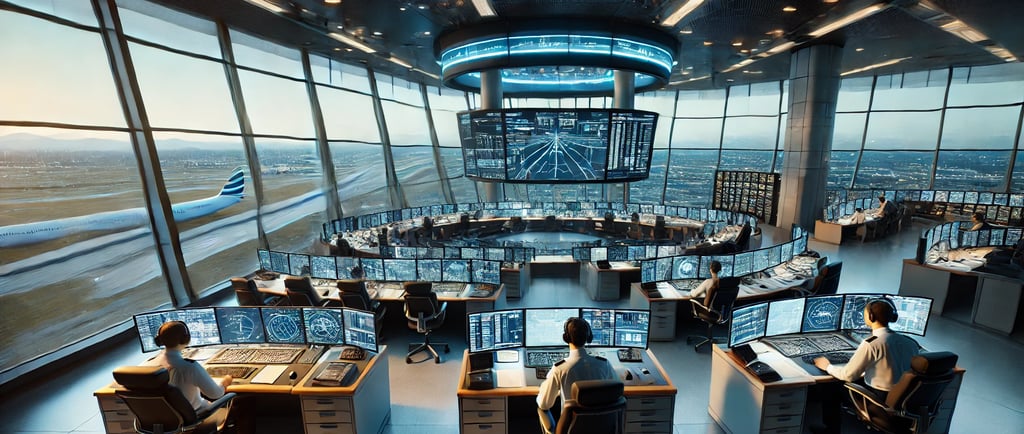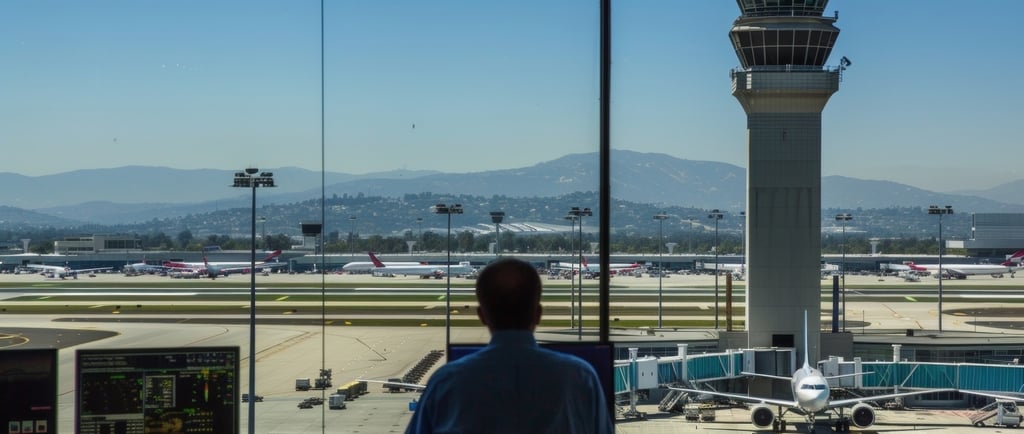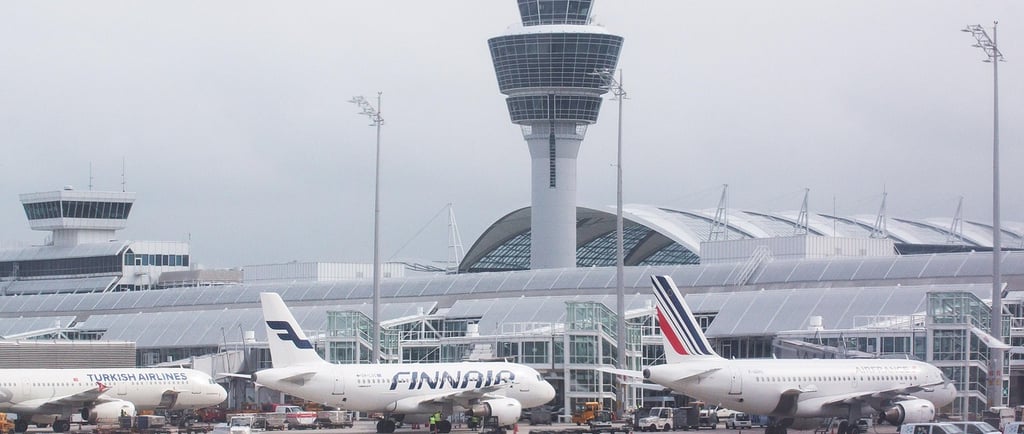Heroes of the Skies: The Strategic Work and Safety Measures of Airport Controllers
When we think about air travel, our minds often drift to the pilots soaring through the clouds or the flight attendants ensuring our comfort at 35,000 feet. However, there’s a group of professionals whose work is equally critical but often goes unnoticed: airport controllers. These individuals are the backbone of aviation safety, orchestrating the complex ballet of aircraft movements on the ground and in the air. In this blog, we’ll explore the strategic work and safety measures employed by airport controllers, shedding light on their vital role in ensuring safe and efficient air travel.
3/15/20256 min read


The Role of Airport Controllers
Airport controllers, also known as air traffic controllers (ATCs), are responsible for managing the flow of aircraft in and around airports. Their primary goal is to prevent collisions, organize and expedite the flow of traffic, and provide information and support to pilots. This role requires a unique blend of skills, including sharp attention to detail, quick decision-making, and the ability to remain calm under pressure.
Controllers work in control towers, approach control facilities, and en-route centers. Each of these environments has its own set of responsibilities:
Tower Controllers: These controllers manage aircraft movements on the runways and taxiways. They give clearance for takeoff and landing, direct ground traffic, and ensure that aircraft maintain safe distances from each other.
Approach and Departure Controllers: Once an aircraft is in the air, approach and departure controllers take over. They guide planes during the critical phases of ascent and descent, ensuring safe transitions between the airport and the en-route airspace.
En-Route Controllers: These controllers manage aircraft during the cruise phase of flight, monitoring their progress and ensuring they stay on course. They also handle altitude changes and route adjustments as needed.
Strategic Work of Airport Controllers
The work of airport controllers is highly strategic, requiring meticulous planning and coordination. Here are some key aspects of their strategic responsibilities:
1. Traffic Management
One of the primary tasks of airport controllers is to manage the flow of air traffic. This involves sequencing arrivals and departures to minimize delays and maintain safe distances between aircraft. Controllers use radar systems, flight data, and communication with pilots to monitor and direct traffic.
In busy airports, this can be particularly challenging. Controllers must balance the need for efficiency with the imperative of safety. They use various tools and techniques, such as holding patterns, vectoring, and speed adjustments, to manage traffic flow effectively.
2. Weather Monitoring and Response
Weather is a critical factor in aviation safety. Airport controllers must constantly monitor weather conditions and adjust their strategies accordingly. This includes dealing with thunderstorms, fog, wind shear, and other weather phenomena that can affect flight operations.
Controllers work closely with meteorologists to get real-time weather updates. They use this information to make decisions about runway usage, flight paths, and potential delays or diversions. In severe weather conditions, controllers may need to implement ground stops or reroute flights to ensure safety.
3. Emergency Management
Airport controllers are trained to handle a wide range of emergencies, from engine failures to medical emergencies on board. In such situations, controllers must act quickly and decisively to ensure the safety of the aircraft and its passengers.
Emergency procedures are well-defined, and controllers undergo regular training to stay prepared. They coordinate with other agencies, such as fire and rescue services, to provide immediate assistance when needed. Controllers also play a crucial role in guiding aircraft to safe landings during emergencies.
4. Coordination with Other Air Traffic Control Units
Air traffic control is a collaborative effort that involves multiple units working together. Airport controllers must coordinate with en-route centers, neighboring airports, and international air traffic control agencies to ensure seamless transitions for aircraft.
This coordination is essential for managing cross-border flights, handling overflights, and dealing with airspace congestion. Controllers use standardized communication protocols and data-sharing systems to maintain smooth operations across different jurisdictions.
Safety Measures in Air Traffic Control
Safety is the paramount concern in air traffic control. Airport controllers implement a range of safety measures to prevent accidents and ensure the safe operation of aircraft. Here are some of the key safety measures:
1. Separation Standards
One of the fundamental principles of air traffic control is maintaining safe separation between aircraft. Controllers use specific separation standards to ensure that aircraft do not come too close to each other, either horizontally or vertically.
The exact separation standards depend on the type of airspace and the phase of flight. For example, in controlled airspace, the standard horizontal separation is typically 5 nautical miles, while vertical separation is usually 1,000 feet. Controllers use radar and other surveillance tools to monitor these distances and make adjustments as needed.
2. Collision Avoidance Systems
Modern aircraft are equipped with collision avoidance systems, such as the Traffic Collision Avoidance System (TCAS). These systems provide pilots with real-time information about nearby aircraft and issue alerts if a potential collision is detected.
Airport controllers work in tandem with these systems, providing additional guidance and support to pilots. In the event of a TCAS alert, controllers may instruct pilots to change altitude or course to avoid a collision.
3. Runway Safety
Runway safety is a critical aspect of airport operations. Controllers are responsible for ensuring that runways are clear before giving clearance for takeoff or landing. They use ground radar and visual checks to monitor runway activity.
To prevent runway incursions (unauthorized entry onto a runway), controllers follow strict protocols for issuing clearances and communicating with pilots. They also use advanced technologies, such as Runway Status Lights (RWSL), to provide visual warnings to pilots and vehicle drivers.
4. Continuous Training and Simulation
Airport controllers undergo rigorous training to prepare for their roles. This training includes classroom instruction, simulation exercises, and on-the-job training. Controllers must pass multiple exams and certifications to qualify for their positions.
Simulation is a key component of controller training. Simulators replicate real-world scenarios, allowing controllers to practice their skills in a controlled environment. This training helps controllers develop the ability to handle complex situations and make quick decisions under pressure.
5. Fatigue Management
The demanding nature of air traffic control work can lead to fatigue, which can impair performance and increase the risk of errors. To address this, controllers work in shifts with regular breaks to ensure they remain alert and focused.
Air traffic control organizations also implement fatigue risk management systems (FRMS) to monitor and mitigate the impact of fatigue on controllers. These systems use data analysis and risk assessment to identify potential fatigue-related issues and implement preventive measures.
The Future of Air Traffic Control
As air travel continues to grow, the role of airport controllers is becoming even more critical. The aviation industry is constantly evolving, with new technologies and procedures being introduced to enhance safety and efficiency.
1. Automation and Artificial Intelligence
Automation is playing an increasingly important role in air traffic control. Advanced software systems can assist controllers by automating routine tasks, such as flight data processing and conflict detection. This allows controllers to focus on more complex decision-making.
Artificial intelligence (AI) is also being explored for its potential to enhance air traffic management. AI algorithms can analyze vast amounts of data to predict traffic patterns, optimize routes, and identify potential risks. However, the human element remains essential, and controllers will continue to play a central role in overseeing and managing air traffic.
2. Remote Tower Technology
Remote tower technology is an innovative development that allows controllers to manage airport operations from a remote location. Instead of being physically present in the control tower, controllers use high-definition cameras and sensors to monitor airport activity.
This technology has the potential to improve efficiency and reduce costs, particularly for smaller airports. It also allows for more flexible staffing arrangements, as controllers can manage multiple airports from a centralized location.
3. Integration of Unmanned Aircraft Systems (UAS)
The rise of unmanned aircraft systems (UAS), or drones, presents new challenges for air traffic control. Controllers must integrate UAS operations into the existing airspace while ensuring the safety of manned aircraft.
This requires the development of new procedures and technologies, such as UAS traffic management (UTM) systems. These systems will enable controllers to monitor and manage drone traffic, ensuring safe and efficient integration with traditional air traffic.
Conclusion
Airport controllers are the unsung heroes of the skies, working tirelessly behind the scenes to ensure the safety and efficiency of air travel. Their strategic work and safety measures are essential for preventing collisions, managing traffic flow, and responding to emergencies.
As the aviation industry continues to evolve, the role of airport controllers will become even more critical. With the integration of new technologies and the increasing complexity of air traffic, controllers will need to adapt and innovate to meet the challenges of the future.
Next time you board a flight, take a moment to appreciate the incredible work of airport controllers. Their dedication and expertise are what keep us safe in the skies, making air travel one of the safest modes of transportation in the world.




Contact us
Copyright © 2025. Ralnoscape All rights reserved.
Destinations
Resources


Follow us
This website uses affiliate links which may earn a commission at no additional cost to you
